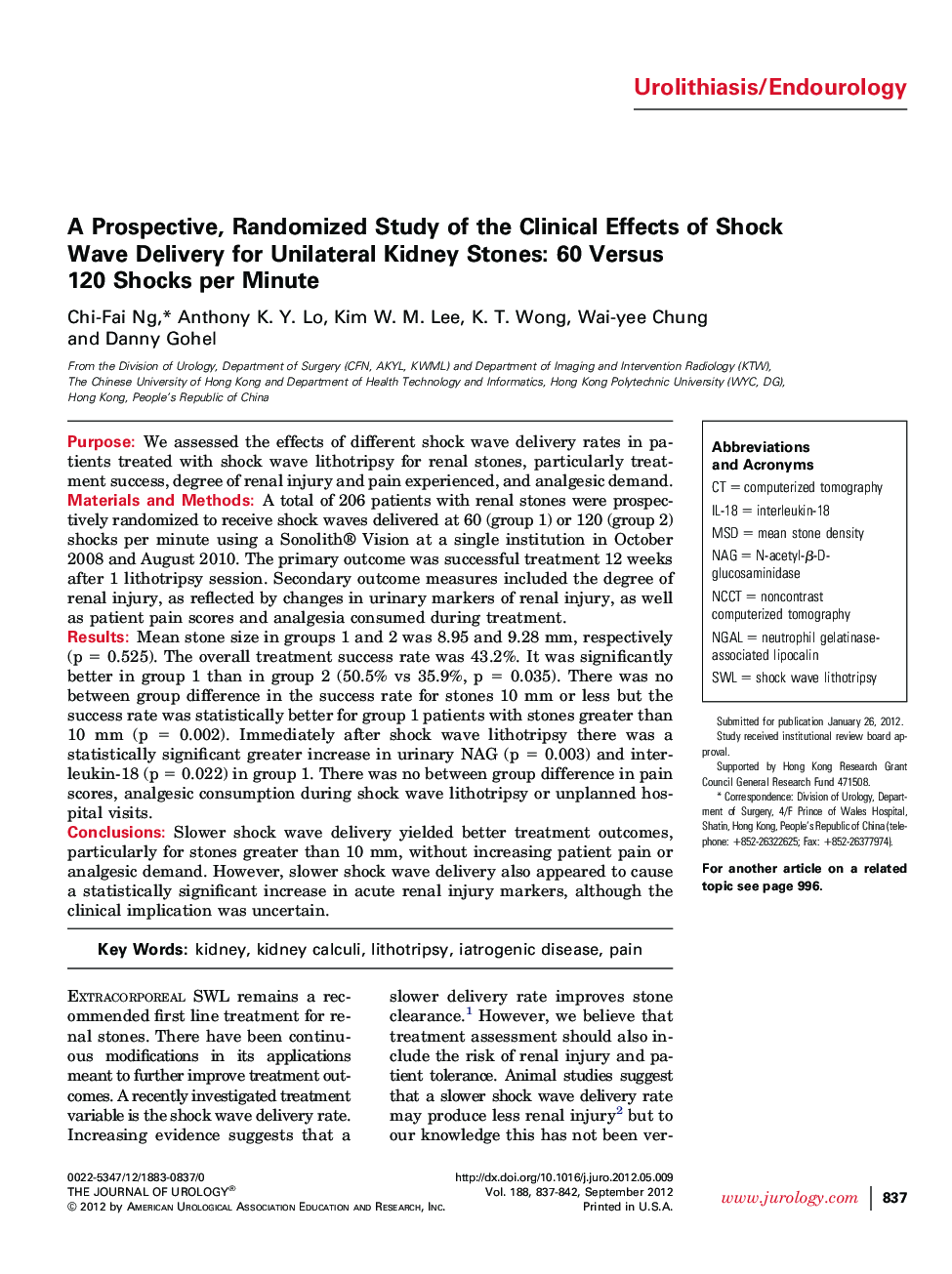| کد مقاله | کد نشریه | سال انتشار | مقاله انگلیسی | نسخه تمام متن |
|---|---|---|---|---|
| 3862242 | 1598931 | 2012 | 6 صفحه PDF | دانلود رایگان |

PurposeWe assessed the effects of different shock wave delivery rates in patients treated with shock wave lithotripsy for renal stones, particularly treatment success, degree of renal injury and pain experienced, and analgesic demand.Materials and MethodsA total of 206 patients with renal stones were prospectively randomized to receive shock waves delivered at 60 (group 1) or 120 (group 2) shocks per minute using a Sonolith® Vision at a single institution in October 2008 and August 2010. The primary outcome was successful treatment 12 weeks after 1 lithotripsy session. Secondary outcome measures included the degree of renal injury, as reflected by changes in urinary markers of renal injury, as well as patient pain scores and analgesia consumed during treatment.ResultsMean stone size in groups 1 and 2 was 8.95 and 9.28 mm, respectively (p = 0.525). The overall treatment success rate was 43.2%. It was significantly better in group 1 than in group 2 (50.5% vs 35.9%, p = 0.035). There was no between group difference in the success rate for stones 10 mm or less but the success rate was statistically better for group 1 patients with stones greater than 10 mm (p = 0.002). Immediately after shock wave lithotripsy there was a statistically significant greater increase in urinary NAG (p = 0.003) and interleukin-18 (p = 0.022) in group 1. There was no between group difference in pain scores, analgesic consumption during shock wave lithotripsy or unplanned hospital visits.ConclusionsSlower shock wave delivery yielded better treatment outcomes, particularly for stones greater than 10 mm, without increasing patient pain or analgesic demand. However, slower shock wave delivery also appeared to cause a statistically significant increase in acute renal injury markers, although the clinical implication was uncertain.
Journal: The Journal of Urology - Volume 188, Issue 3, September 2012, Pages 837–842